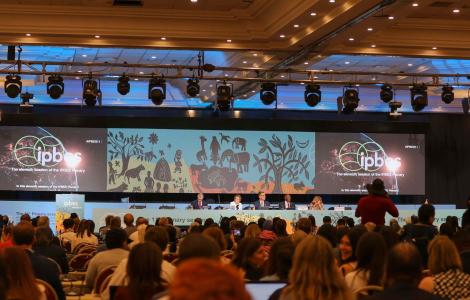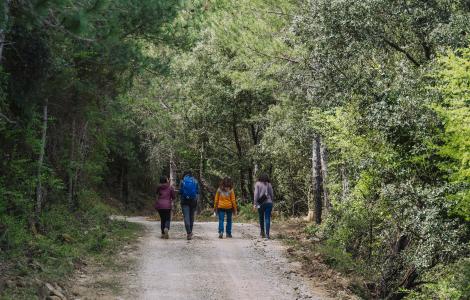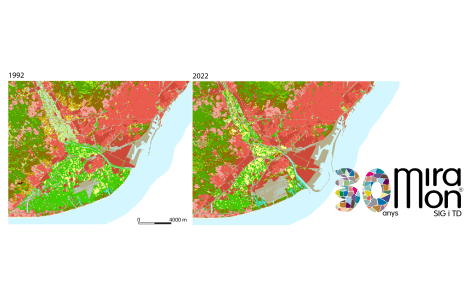Droughts alter microbial diversity of the land and increase CO2 emissions

Researchers from the UAB, CREAF and the National Museum of Natural Sciences (MNCN-CSIC) have analysed how the deterioration of woods caused by droughts associated to global warming are affecting the microbial composition of the soil and modifying carbon cycles.

Microorganisms in the soil decompose fallen leaves and dead branches. Therefore, in addition to recycling nutrients, they return to the atmosphere part of the carbon assimilated by the plants through photosynthesis, especially in the form of CO2. In fact, the emissions of the microbial communities found in the soil are one of the major contributors of CO2 into the atmosphere and small changes in their ecology can represent large differences in the total emission of this greenhouse gas. The deterioration of woods, which in recent years has multiplied in the Iberian Peninsula, is the effect of increased droughts and is characterised by the defoliation and mortality of trees and shrubs.
This research project analysed the 2005 drought in Doñana, an area containing an enormous biodiversity in Mediterranean plants, and how this diversity was affected by the microorganisms in the soil. “That year was especially dry and in addition there was a very harsh winter. This resulted in massive defoliation, especially in the areas where there were shrubs and Spanish junipers”, explains Francisco Lloret, CREAF researcher and lecturer of the Universitat Autònoma de Barcelona. “We extracted DNA from the soil and studied three environments: the junipers, shrubs and pastures, and we analysed the relation between the diversity of plants and the bacteria and fungi found in the soil", Lloret continues.
The pastures contained a higher level of diversity in bacteria because there was a greater variety of plants generating different environments for the bacteria. In contrast, the Spanish junipers were surrounded by more fungi due to the abundance of mycorrhizal species, associated with the woody roots of the juniper.
Balance between bacteria and fungi in Doñana's soil
The drought in 2005 increased the number of herbaceous species which substituted the junipers which had died. The increase in dead leaves produced by the defoliation of the junipers modified the microbial diversity of the soil. “We detected that the result, which continues up to this day, was an increase in the diversity of bacteria in the area with more herbaceous plants, in comparison to a decrease in the diversity of fungi in the dry juniper areas, probably due to the disappearance of mycorrhizal species”, explains MNCN researcher Jorge Curiel Yuste.
“The bacteria and fungi use very different strategies when recycling nutrients and carbon. Bacteria works much quicker, but it also emits more CO2. This change in balance between bacteria and fungi can represent enormous variations in the amount of nutrients recycled and in the CO2 emissions of the systems affected by droughts", Yuste declares.
“This research shows how the ecology of the soil, which affects the carbon cycle (vital for the maintenance of life on Earth) is altered by climate change and favours the emission of carbon dioxide”, the researchers conclude.
ARTICLE
Lloret, F., Mattana, S. y Curiel Yuste, J. Climate-induced die off affects plant-soil microbe ecological relationship and functioning. (2014) FEMS Microbiology Ecology
Notícies relacionades

L’IPBES publica dos informes per transformar la manera com ens relacionem amb la natura, conservar-la i sobreviure

L’impacte social de la recerca es consolida a la cultura científica del CREAF


